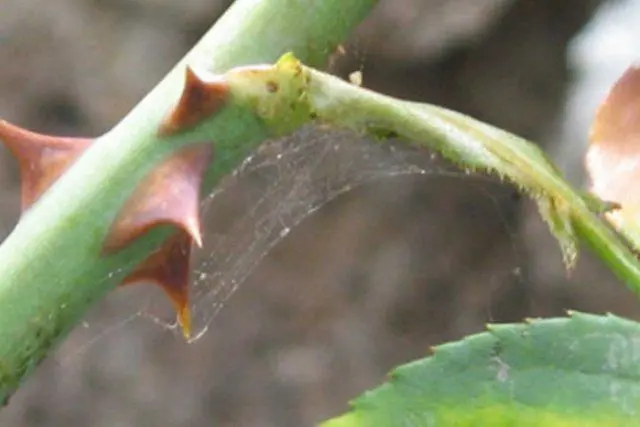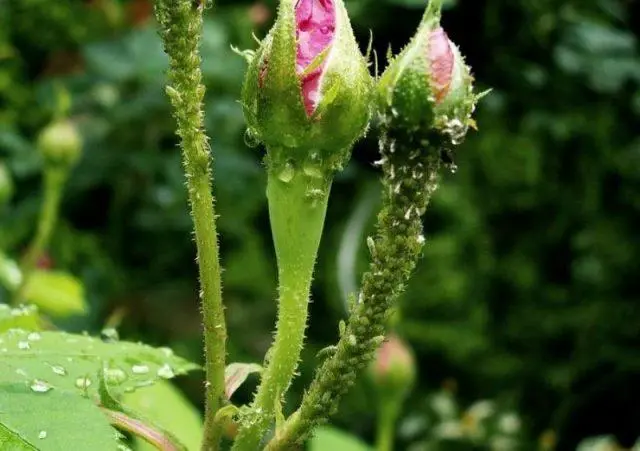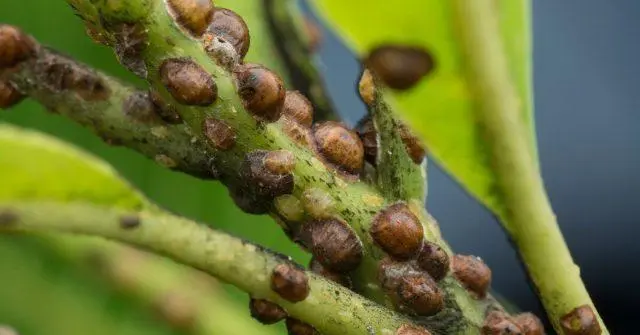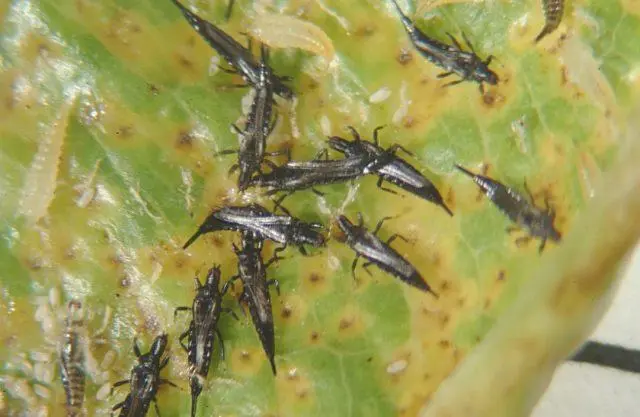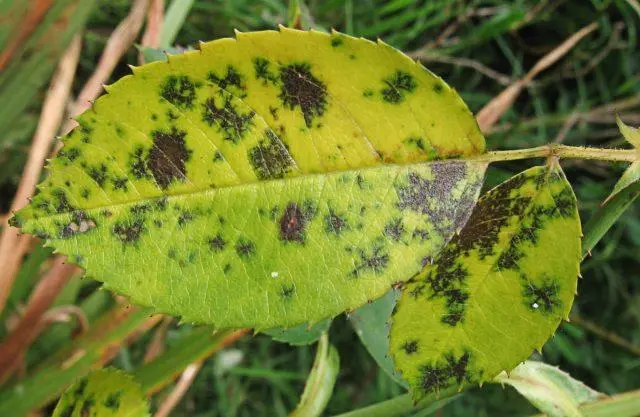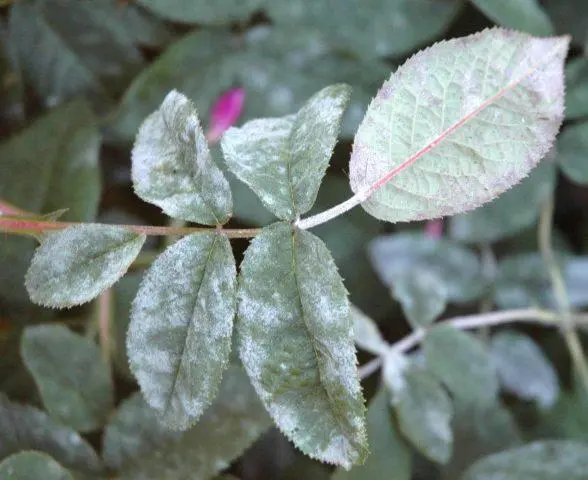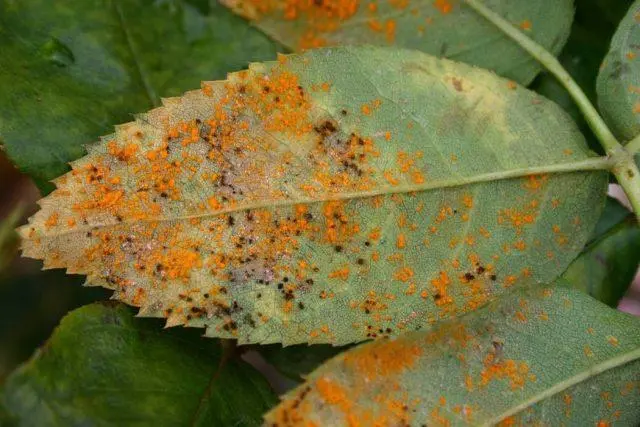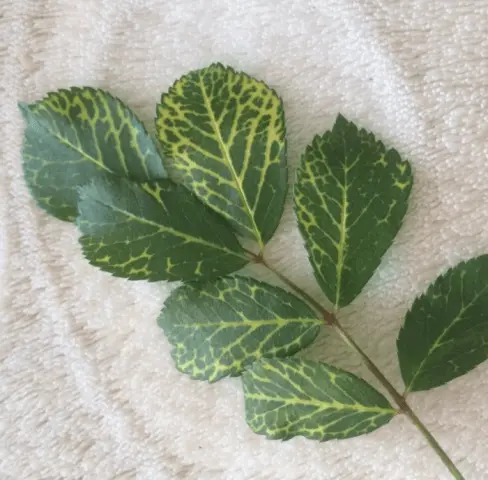Contents
The rose is deservedly considered a “capricious” flower. She immediately reacts to the gardener’s mistakes in choosing a landing site or leaving with a deterioration in appearance. Also, if the leaves of a rose in the garden turn yellow, this may be due to the development of a disease or an attack by pests. In most cases, especially when the problem is noticed early, the bushes can be saved. But you need to be able to correctly identify the cause: the effectiveness of the measures taken directly depends on this.
Why did rose leaves turn yellow?
Many varieties and hybrids of roses are quite “capricious” and “tender”. When the leaves turn yellow on the bushes in the garden, this is a common reaction to errors in agricultural technology or the wrong choice of landing site. Another very likely option is infection of plants with pathogenic microflora or pest attacks.
Lack of light
Most varieties and hybrids need bright but diffused light to maintain their decorative effect. Otherwise, the leaves of the rose bushes in the garden become smaller in summer, turn pale and turn yellow.
Culture requirements for illumination must be taken into account when choosing a place for a flower bed. The lack of light manifests itself quickly enough – the leaves on the roses in the garden turn yellow and fall off, starting from the lowest ones. Then the shoots unnaturally stretch and become thinner, turning into a kind of “whips”. Such bushes form very few buds, or they are absent altogether. The flowers on them are small, the petals are faded.
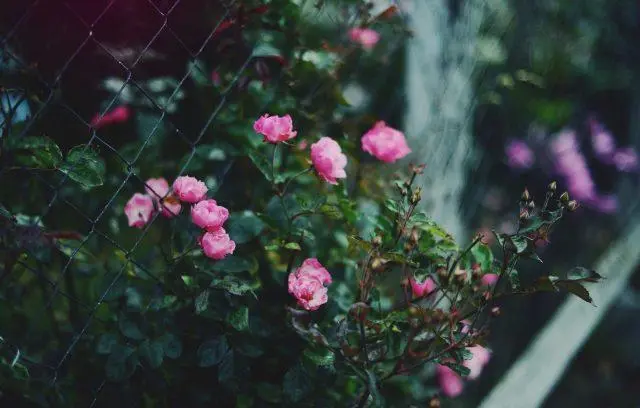
Far from all roses tolerate direct sunlight, but only a few can grow in the shade.
Incorrect watering
If rose leaves turn yellow, this may indicate both a constant “drought” in the flower bed and regular waterlogging of the soil. In the first case, at first the edges of the leaves dry out and turn yellow in roses. Then they curl up, dry out completely and fall off. The development of the bush practically stops, in especially severe cases, the entire above-ground part dies off.
In the second, root rot almost inevitably develops. On the aerial part of the rose bushes in the garden, this manifests itself as follows: first, “weeping” brown-black spots appear at the base of the shoots and petioles, then the leaves wither and turn yellow. The stems affected by the pathogen die off, and the entire bush soon dies.
With the right watering regime, roses in the garden can gradually turn yellow due to the use of tap water. It is “enriched” with compounds of chlorine and fluorine, these substances are not liked by plants. Water must first be defended or softened in another way.
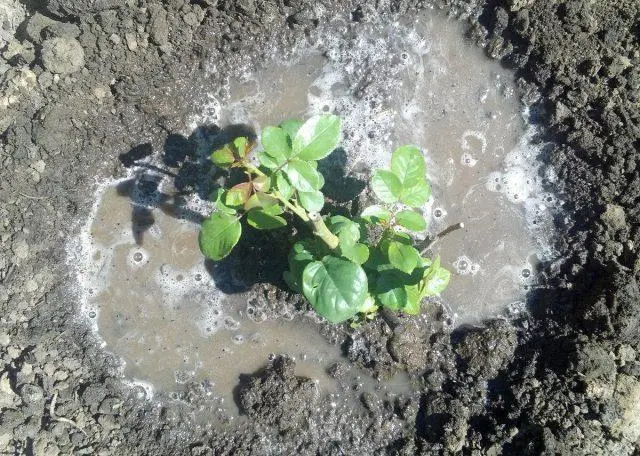
Roses in the garden are extremely sensitive to watering regime.
temperature change
With a sharp drop in temperature, even a short one, the leaves on the roses turn completely yellow almost before our eyes – within 2-3 days. Then, in most cases, the bush “goes bald”, losing all or most of its foliage.
Substance deficiency
For normal development, abundant and bright flowering, bushes require macro- and microelements. They are quite sensitive to the composition of the soil. If the leaves on roses in the garden turn yellow due to a deficiency of certain substances, as a rule, other symptoms accompany this:
- Nitrogen. First, the leaves on roses in the garden change color to pale green and become smaller, then turn completely yellow, become rough to the touch. The stems are deformed, thinner.
- Potassium. The leaves of roses in the garden turn yellow only along the edge, gradually a dry border forms there. In new, only blooming leaf plates, a reddish-purple undertone appears in color.
- Phosphorus. Young leaves on roses in the garden become very small, the lowest ones turn red. On most of the bush, they turn yellow, then dry up and fall off.
- Magnesium. The veins and middle of the leaves turn yellow, the edges retain their natural color. Quite quickly, they are covered with reddish “specks”, the roses in the garden “go bald” by the middle of summer.
- Iron. The veins remain green, the leaf blades turn completely yellow. If nothing is done, a reddish undertone appears in the color, the tips dry out.
- Manganese. The oldest leaves on roses in the garden turn completely yellow, the rest appear light lemon stripes and spots between the veins.
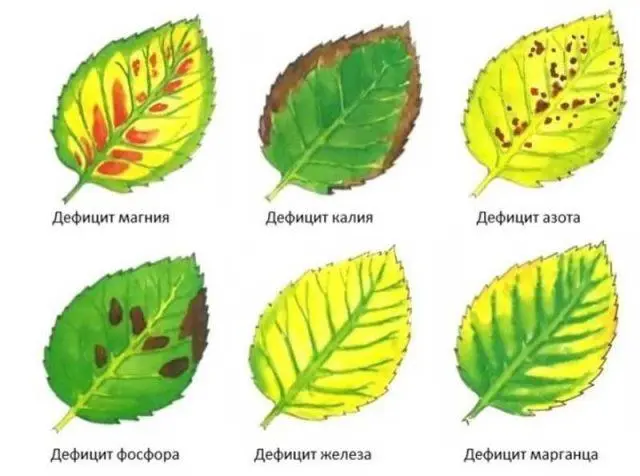
About what exactly they lack, the bushes indicate a change in appearance.
vermin
In pests in the garden, a rose is a fairly “popular” plant. Most often it affects:
- Spider mite. The plant, especially the most “tender” parts of it, are entwined with an almost transparent thin cobweb. Discolored “dots” appear on the underside of the sheet plates. Gradually, they completely turn yellow and dry out.

It is problematic to distinguish a spider mite on roses in the garden – it is comparable in size to a grain of sand
- Aphid. Small insects that “settle” on roses in the garden in whole colonies. They feed on plant sap, cover leaves, stems, buds with a continuous layer. The affected parts of the bush turn yellow, then completely discolor, dry and die.

Aphids and ants coexist in a sustainable symbiosis, so anthills next to roses must be fought
- Rose shield. Small greyish-brown rounded “growths” on leaves and stems. Gradually, they swell, increasing in volume, and the tissues around them turn yellow, then redden. The leaves turn brown and curl up, the shoots are deformed.

The shield is reliably protected by a strong shell, it is useless to fight it with the help of folk remedies
- Thrips. Small black “sticks” on the wrong side of the sheet plates. They suck the juice out of the tissues.

Thrips often attack indoor or greenhouse roses, but bushes in the garden are not immune from them either.
disease
Fungi and other pathogenic microflora, if nothing is done, can destroy a rose bush in a garden during the season or even faster. Of the diseases for the culture are typical:
- Black spotting. Initially brownish blurry spots quickly turn black. Rose leaves turn yellow completely, curl up and fall off.

The causative agent of black spot successfully winters in the soil, remaining viable for 3-5 years
- Powdery mildew. A grayish or whitish powdery coating on the plant gradually darkens and “compacts”. The tissues under it turn yellow, turn brown and die.

Powdery mildew is dangerous for the vast majority of ornamental and fruit-bearing crops in the garden.
- Rust. A “hairy” orange-yellow bloom appears on the underside of the leaf plates, quickly “compacting” and changing shade to rusty brown. The front side turns yellow.

Roses affected by rust in the garden “go bald” within a few months
- “Jaundice”. First, the veins turn yellow, then the leaf plates completely. They curl up in a tube, fall off.

“Jaundice” – a bacterial disease, it is impossible to cure roses in the garden
What to do if rose leaves turn yellow
The measures taken directly depend on why yellow leaves appeared on the roses in the garden. Therefore, it is extremely important to quickly and correctly determine the cause or complex of causes.
If errors in agricultural technology are “guilty”, it is enough to adjust the care, and the healthy appearance of the bush will recover on its own. Sometimes, if the leaves turn yellow, you just need to feed the rose or water it.
With the wrong choice of place, in the near suitable time, the rose is transferred to a plot in the garden that “arranges” it. When the stage of the growing season does not allow for a quick transplant, the plant is “supported” with the help of foliar top dressing with biostimulants. They do the same if the reason is only in the weather, for example, due to the fact that it is constantly overcast, the bushes do not receive enough light.
When a rose turns yellow due to a disease or pest attack, it is necessary, first of all, to carry out a “haircut”. Get rid of all parts of the bush, even slightly affected by pathogens and insects. All sections are immediately disinfected, the resulting plant debris is burned as quickly as possible.
Then specialized preparations are used. Folk remedies, as a rule, are already useless, they will simply be a waste of time. You need to choose from biological products and agrochemicals, taking into account the degree of neglect of the problem and other factors.
If the roses in the garden turn yellow due to fungal diseases, copper-containing products are used – fungicides. Preparations for the destruction of pathogenic viruses and bacteria do not yet exist, so the affected bushes can only be dug up and burned so that the pathogen does not spread further along the site.
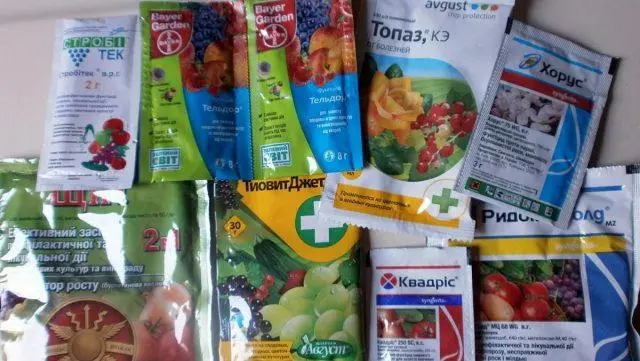
Fungicide treatment includes spraying both the bushes themselves and the soil in the flower bed
Against insects, universal or “highly specialized” insecticides are used. In the fight against spider mites, they will be useless, since it belongs to arachnids. When the roses in the garden turn yellow because of it, it is necessary to use acaricides or insectoacaricides.
Any drugs are used in strict accordance with the manufacturer’s instructions. Especially carefully you need to study the instructions regarding the procedure for preparing the working solution, its concentration and frequency of treatments. If you increase the content of the active ingredient or spray the roses in the garden more often, counting on a faster and more pronounced effect, you can simply “kill” the plants or cause serious harm to the environment.
All work with chemicals is carried out using a personal protection kit.
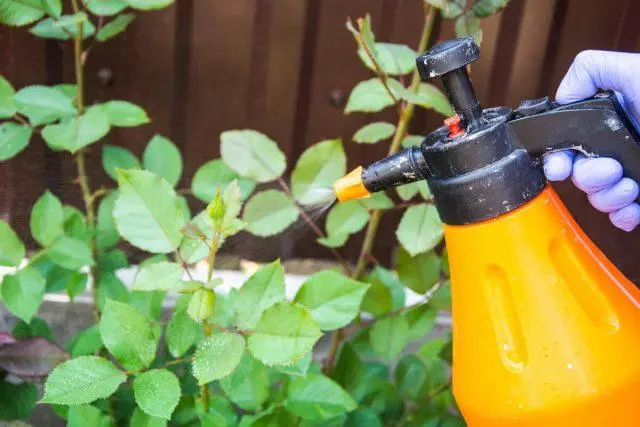
Most agrochemicals are not officially considered dangerous to humans, but it’s better to play it safe.
preventive measures
In order not to have to think about why the roses in the garden turn yellow, losing their decorative effect, it is recommended to take care of the prevention of this unpleasant phenomenon in advance. Simple measures, if you devote time to them regularly, practically guarantee the bushes “protection”:
- Careful inspection of roses in the garden at least once a week and a half. This will allow you to notice any problem at an early stage, when it is much easier to deal with it than with “hard cases”.
- Selection of varieties and hybrids that are resistant to certain diseases or pests. If you have to deal with certain pathogens or insects on roses in the garden constantly, it is advisable to choose varieties that provide “innate” protection against them.
- Regular weeding. Weeds, pests and pathogens, from which the leaves of roses turn yellow, are used as “intermediate” hosts.
- Cleaning the flower bed at the end of the season from plant and other debris, deep loosening of the soil, updating the mulch. In dry foliage, fallen petals, broken stems or shallow in the ground, eggs, larvae, adult insects, pathogenic microflora successfully overwinter.
- Choosing a place for planting roses in the garden in accordance with the “requirements” of the culture. Otherwise, the normal development of the bush is impossible, it weakens, becomes more susceptible to any negative external influences.
- Quality care. This is especially true for watering, fertilizing and pruning.
- Planting roses in compliance with the recommended intervals between the bushes, without “crowding” in the flower bed. Otherwise, normal aeration and illumination of all shoots is impossible, a “stale” atmosphere is formed, which is very favorable for the development of many pathogens and the activation of pests.
- Disinfection of garden tools every time after work. “Transfer” in this way of pathogens and insects from diseased roses to healthy ones is a very common phenomenon.
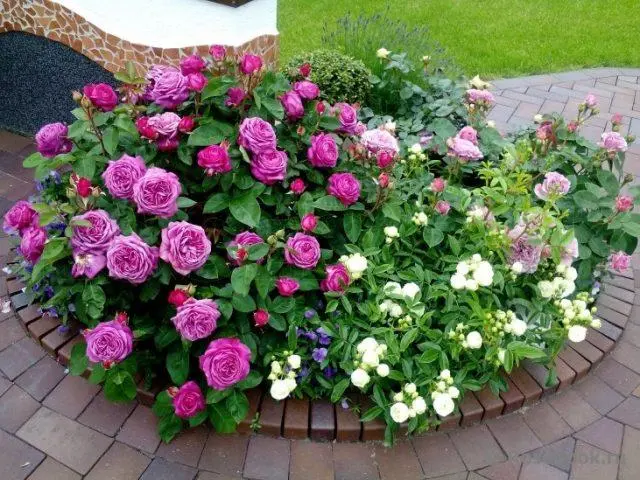
Regular inspections of rose bushes are a very healthy habit.
Conclusion
If the leaves of a rose in the garden turn yellow, this cannot be ignored. Such a symptom can be caused by a variety of reasons, so there is simply no “universal” solution to the problem. It is necessary to correctly determine the “diagnosis” and only then take action.










